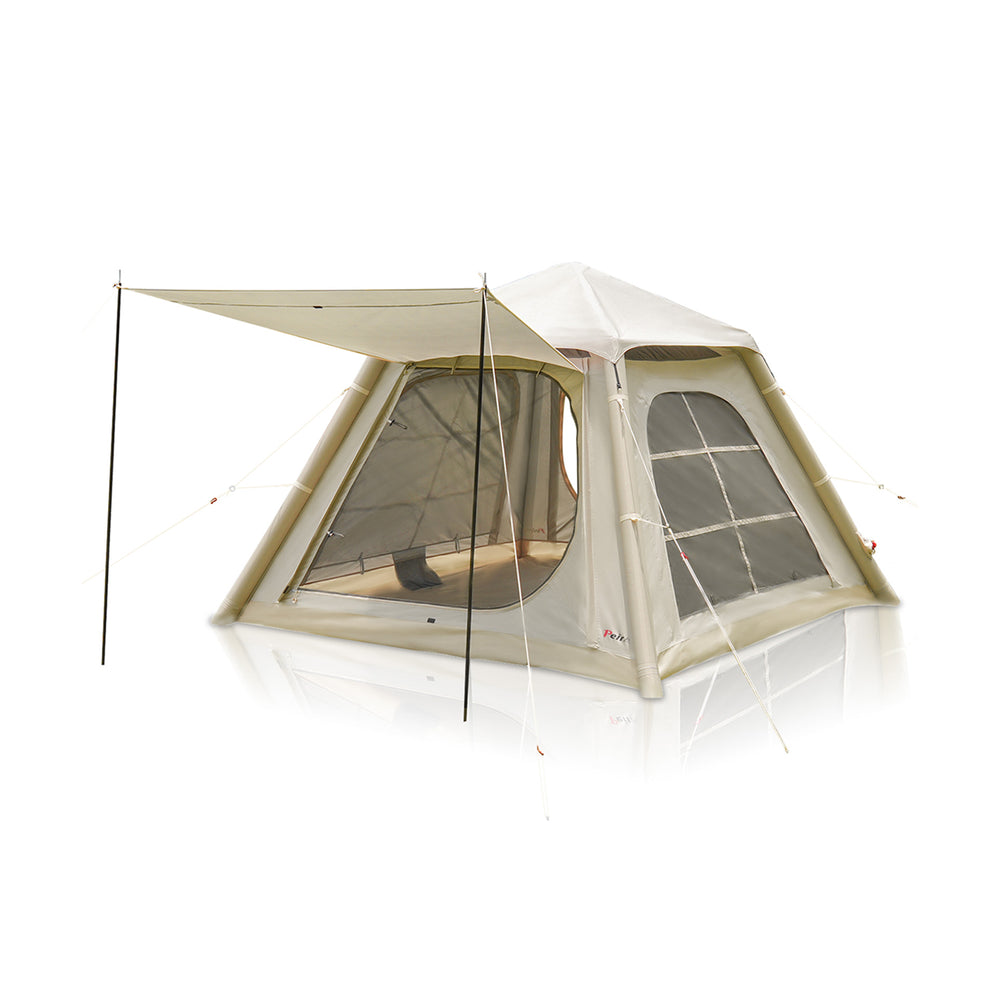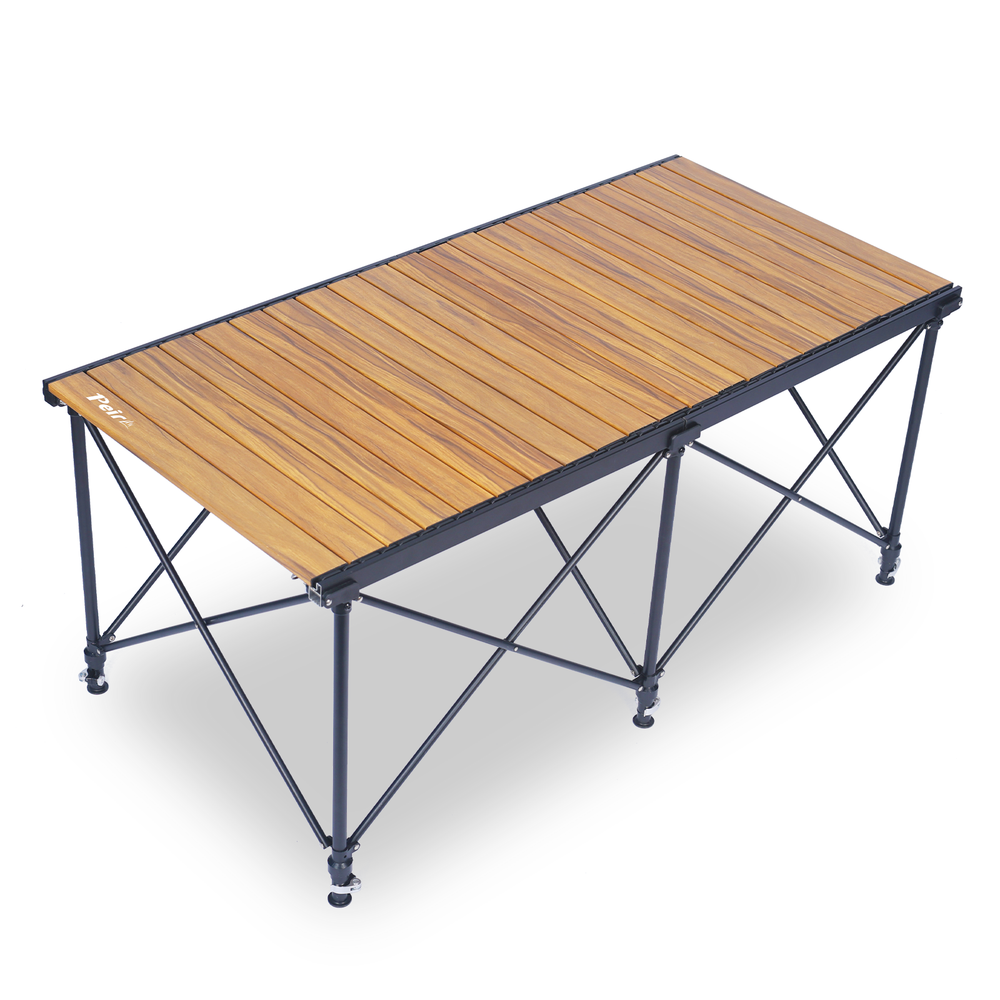What exactly is a tent footprint? In simple terms, it's a protective layer that you place under your tent's floor to keep it clean, dry, and safe from damage. And yes, you’ll definitely want one.Most modern tents don’t come with a footprint included, mainly to reduce weight. While you don’t absolutely need a footprint to use your tent, trust me, you’ll appreciate having one. Even the most hardcore ultralight hikers will admit that there are plenty of good reasons to bring a footprint along.
Maybe you wouldn’t dream of setting up your tent without one, or maybe you’ve been wondering if a footprint is really necessary. Whatever your stance on footprints (or ground cloths, tarps, or whatever you prefer to call them), this is a topic that sparks a lot of debate in the outdoor community. So, let’s dive in and settle the footprint debate once and for all, shall we?
What Does A Footprint Do?
Despite popular belief, footprints do not add waterproofing to the bottom of your tent; the floors of almost all modern tents are already made of waterproof fabric like silnylon or dyneema. The main purposes of a footprint are to protect the floor of your tent from abrasive objects (like sticks, roots, and rocks), to keep your tent clean of mud and tree sap, and to help you determine a good spot to pitch your tent.
Abrasive Stuff – Little twigs and pebbles may not seem like a big deal, but repetitious abrasion on the same spot can eventually wear a hole in thin tent floor fabric. A footprint adds an extra layer of protection from abrasive objects and can extend the life of your tent. Carefully choosing a site and meticulously clearing debris away before pitching your tent will reduce the risk of mishaps.
Messy Stuff – We all expect our gear to get a little dirty when we take it outside, but having sticky tree sap all over the bottom of your tent can be a real nightmare. Footprints can take the brunt of the sap and berry stains to keep your tent looking and feeling pristine for longer.
Awkward Angles – Many of us have experienced this: you find the perfect spot to pitch your tent, like it’s practically designed just for your tent. You start unloading your pack and staking your tent out only to discover that there’s one root that, no matter how you angle your tent, will not allow you to fit in this space. Setting a footprint out first (especially if you need to fit multiple tents in the same site) takes most of the guesswork out of spatial planning.
Recommend:
Here are 6 great reasons you need to buy a tent footprint:
1. Prolong the life of your tent
With 90% of tents being made with a sewn in groundsheet these days, buying a footprint has become even more essential. Protect your brand new tent from abrasion or cuts from loose stones and twigs - think of this like buying your brand new phone a screen protector or cover - better being safe than sorry! Even with the best will and greatest care in the world, accidents can always happen while out camping - so it'll pay off in the long run to give your tent as much protection as possible from day one.
2. Add extra warmth
Adding a footprint to the underneath of your tent will create another layer, slightly raising you off the floor to reduce the amount of heat loss to the ground. People seriously underestimate how much body heat can be lost like this when camping. This, combined with a good sleeping mat or air bed will provide a great basis for a cosy night's sleep. Most heat is lost to the ground while out camping, so a footprint will help keep you nice and cosy.
3. Add extra waterproofing
Double the layers, double the protection! A second layer of waterproofing can not only give you peace of mind, it can also protect your investment. If you've spent a lot of money on your brand new tent, then you'll want to keep it in the best possible condition for as long as you can.
4. Easier, simplified pitching
Thanks to most footprints being tailor-made and specific to the outline of your tent, you’ll get a clear idea of where your tent is going, where it will fit and where to start pegging from the outset. This will save you precious time and cause fewer headaches when it comes to actually pitching your tent.
5. Packing away is less hassle
If the campsite grounds are fairly wet throughout your stay , when it comes to packing your tent down, you will find that the sewn-in groundsheet of your tent can get very wet and muddy – which isn’t the nicest of leaving gifts. The footprint is something that will prevent most of this from happening and leave your tent relatively dry and clean, so there is a lot less to do afterwards.
6. Tailor-made to suit your tent
You’ll find that most footprints are specific to a tent model (or in some cases fitting more than one model) and will be slightly smaller than the floorplan to prevent any water collection between the sewn in groundsheet and the footprint. This 'made-to-measure' approach makes it really easy to find the right footprint for your tent.
What Can I use as a Tent Footprint?
If we’ve convinced you that a groundcloth is a good idea, you might be wondering where to get one. Well, the obvious, albeit most expensive, choice is to buy one from the manufacturer that made your tent and score one that’s designed for your specific model. Those are going to last the longest and be the most sustainable, though not likely the cheapest or the lightest.
But if you can’t drop $60 just this minute or you’re an ultralight backpacker looking to cut ounces, there are other options. You could get a regular old tarp and fold or cut and sew it to size. I’ve even heard of people buying those cheap plastic tablecloths and cutting them to size, though those won’t last long as they puncture pretty easily, which kinda defeats the point of a groundcloth and will just end up in a landfill where they’ll take decades to break down, so we don’t recommend that.
FAQ
What is the best material for a tent footprint?
The best tent footprints, especially for ultralight backpacking, are often Do-It-Yourself. The most common materials are Tyvek, a high-density polyethylene fiber, and Polypro, a lightweight plastic found in painter's tarps and thin window plastic.
What is a good weight for a tent footprint?
PU coated nylon footprints typically weight around 1.9 ounces/ square yard. The whole footprint usually weighs somewhere between 6 and 8 ounces (about 170-225 grams) for a one-person tent.
What size tent footprint do I need?
What Size Should A Tent Footprint Be? Tent Footprints Should Be 2-3 Inches Smaller Than The Tent Floor You really need to figure out the size of your tent before making a purchase. Don't waste your time with a tent footprint that's too big. Buy a footprint that's 2-3 inches smaller than the outside dimensions of your tent.
Is it OK to use tent without footprint?
You don't need a footprint to use a tent properly, but trust us, you'll want one. Even the crustiest ultralight gram-counters will tell you there are plenty of reasons to bring a footprint along.
Can I use a tarp as a tent footprint?
Tarps can make a great camping groundsheet and if weight isn't the deciding factor but price is, using a piece of tarp under your tent that can be trimmed/cut to the same size as the base of your tent to create a tent groundsheet can be a great option.












 Peirhw Inflatable House Tent - Starry Night Love
Peirhw Inflatable House Tent - Starry Night Love
 Peirhw Glamping Tents - Friendship Castle
Peirhw Glamping Tents - Friendship Castle
 Peirhw Inflatable Canopy Tent - Adventurer
Peirhw Inflatable Canopy Tent - Adventurer



 Peirhw Portable Air Conditioner
Peirhw Portable Air Conditioner
 【Advance Sale】Peirhw Portable Power Station 2400W
【Advance Sale】Peirhw Portable Power Station 2400W
 【Advance Sale】Peirhw Portable Power Station 600W
【Advance Sale】Peirhw Portable Power Station 600W





 Peirhw Self Inflating Sleeping Pad
Peirhw Self Inflating Sleeping Pad
 Peirhw Air Mattress (8" Queen Type)
Peirhw Air Mattress (8" Queen Type)
 Peirhw Camping Sleeping Bag
Peirhw Camping Sleeping Bag


 Peirhw Butterfly-shaped Canopy for Camping
Peirhw Butterfly-shaped Canopy for Camping
 Peirhw Camping Waterproof Canopy (Cannot be Purchased Separately)
Peirhw Camping Waterproof Canopy (Cannot be Purchased Separately)


 Peirhw Outdoor Folding Chairs
Peirhw Outdoor Folding Chairs
 Peirhw Folding Camping Table
Peirhw Folding Camping Table












